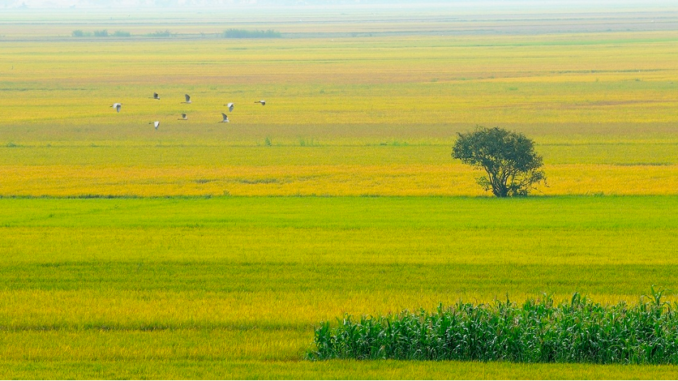
The wet rice civilization in Vietnam is a unique and complex cultural tradition that has developed over thousands of years. It is based on the cultivation of wet rice, which is a staple food crop in Vietnam. Wet rice cultivation is a labor-intensive process that requires a high level of cooperation and coordination among farmers. It has also shaped the Vietnamese landscape, culture, and society in many ways.
History of the wet rice civilization in Vietnam
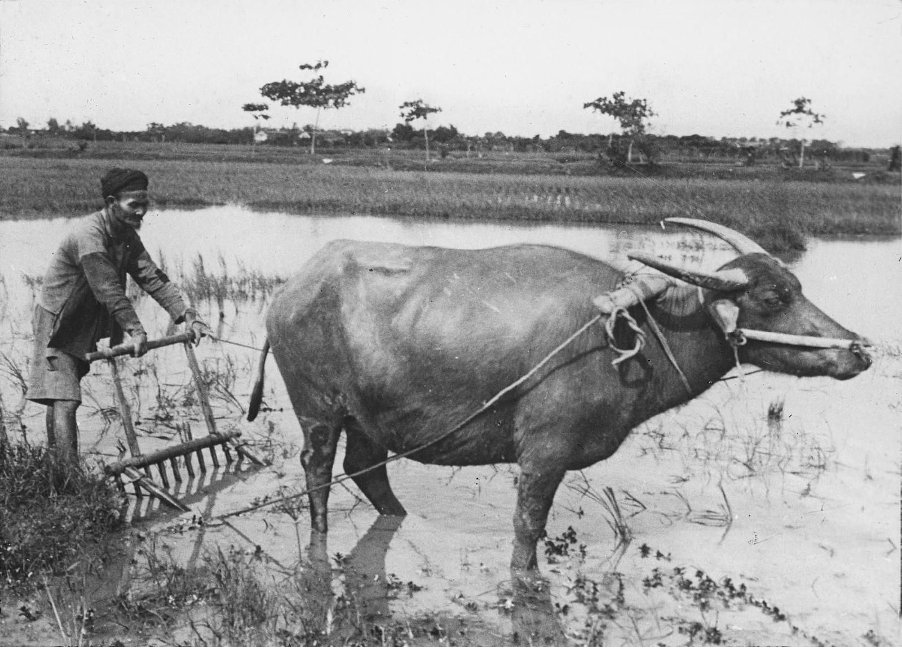
About 10,000 years ago, wet rice civilization appeared in Southeast Asia and opened wet rice civilization in Vietnam. Vietnamese people grow rice and rice has become the primary food source during 4000 years of culture. The Red River Delta is a fertile region with a long growing season, which makes it ideal for wet rice cultivation.
In the past, farmers used their agricultural tools to produce and exploit wet rice crops, such as hoes, sickles, rice millers, plows, etc. They used buffaloes and cows to plow the fields. These tools are simple but useful and are still widely used.
There are two main rice crops in Vietnam: Winter-Spring rice crop (from February to May) and Summer-Autumn rice crop (July – October).
Wet rice cultivation in Vietnam today
Nowadays, some rice production stages and harvesting have the support of machines that save farmers labour and time, such as rice planters, rice harvesters, plowing, etc. The rice-growing areas, particularly the Mekong River Delta, produce three rice crops per year instead of 2 rice crops in the past, producing up to 20 million tons of rice in just one year.
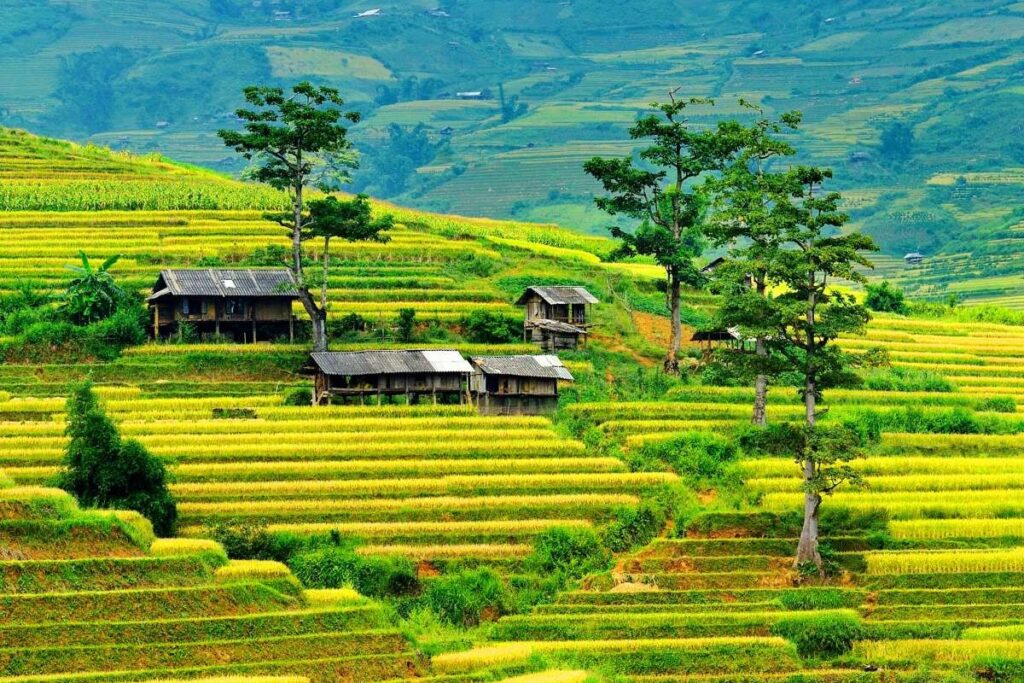
Based on natural conditions and customs, the main rice-growing areas are mainly the Red River, the Central Coastal Delta, and the Mekong River Delta. One unique thing is that in high mountainous areas such as Ha Giang, Lao Cai, and Yen Bai, rice is cultivated on the hillsides to form terraced fields.
The impact of wet rice cultivation on Vietnamese culture and society
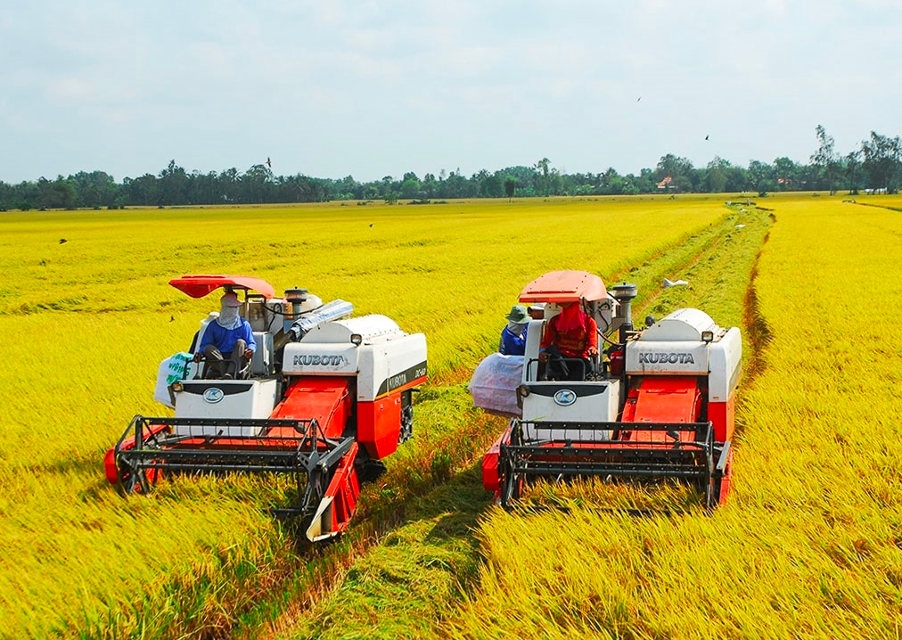
Wet rice cultivation has had a profound impact on Vietnamese culture and society. It has shaped the Vietnamese landscape, culture, and society in many ways.
The Vietnamese landscape is dotted with rice paddies, which are a symbol of the country’s agricultural heritage. Wet rice cultivation has also influenced Vietnamese cuisine, art, and literature. Many Vietnamese festivals and religious ceremonies are related to wet rice cultivation.
Wet rice cultivation has also played an important role in the development of Vietnamese society. It has helped to create a strong sense of community among farmers, and it has also contributed to the development of Vietnamese social and political institutions.
Rice in Vietnamese cuisine
Rice is a must-have dish in each Vietnamese meal. So, instead of saying “enjoy your meal,” Vietnamese people often say “enjoy your “rice” meal.” The Vietnamese will eat white rice with savory dishes, vegetables, soup, and a typical bowl of sauce. Rice enters Vietnamese cuisine through hundreds of thousands of dishes made from vermicelli, pho, noodles, cakes, sticky rice, sweet soup, porridge, etc.
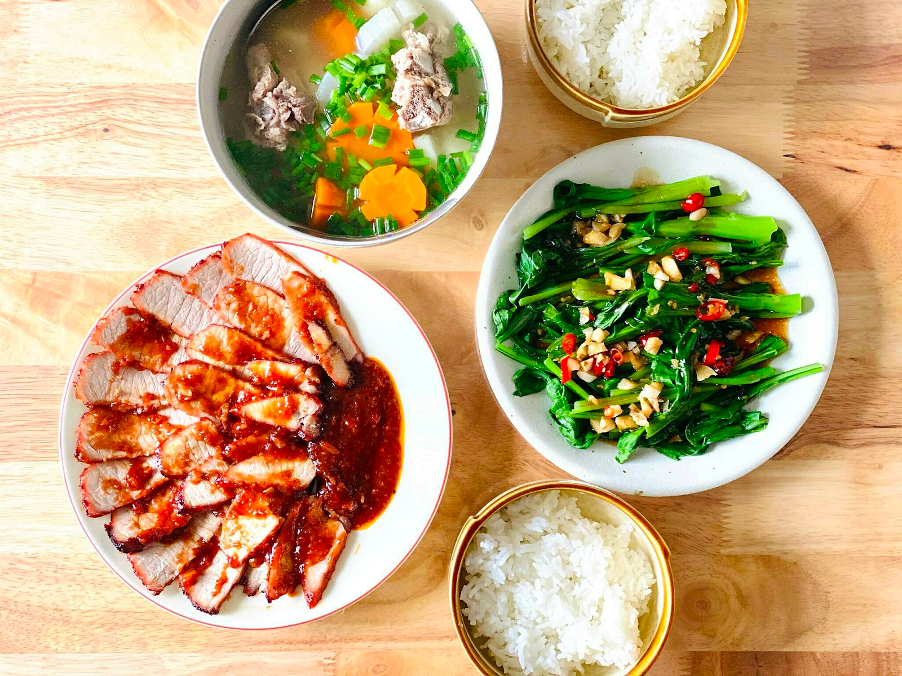
– Cooked rice – Com:
Rice dishes are the most popular and indispensable dishes in every family of rice trays. Soft, fragrant rice seeds are eaten with delicious food to help you feel full for a long time, giving your body more energy.
– Sticky rice
Vietnam rice variety is an important basis for creating many varieties of sticky rice processed differently, but each has the characteristics and identity of each locality and region. The highlight is the five-color sticky rice of the Northwest highlands with eye-catching colors.
– Rice cakes
There are many types of Vietnamese rice cakes, each with its own unique flavor and texture: Bánh Chưng, Bánh Tét, Bánh giò, Bánh bèo, Bánh gai, Bánh cốm, Bánh xèo,..
– Porridge
Porridge is one of the most popular Vietnamese rice dishes, probably second to ordinary rice. Everyone from small to old can eat porridge because it’s easy-to-digest but also the nutritious properties are good for the sick. Vietnamese people have many ways to prepare porridge. Every dish is delicious, such as porridge scallion, pettitoes porridge, perilla porridge, pork rib porridge, Nghe An eel porridge, etc.
– Rice noodle, Pho, vermicelli
Pho is considered a “national soul” dish that everyone thinks about when it comes to Vietnamese cuisine. The rice noodle must be made with rice flour, coated in thin layers, steamed, and cut into small strands to taste. In addition, Vietnam has many unique types of vermicelli. Each dish contains different delicious flavors that anyone has ever tried
– Rice wine
Rice wine is sort of the main traditional beverage in Vietnamese culture and cuisine. After cooking, the rice shall be cooked with yeast for 4-5 days, and put in a pot. The spot’s superior design for wine brewing consists of a tube above which the pot is extended through a cold water container to produce condensed wine droplets. The fragrant wine drops, mixed with a little sweetness, a little spicy, and a must-have in a rice tray or a men’s drinking party.
The wet rice civilization in Vietnam is a unique and complex cultural tradition that has developed over thousands of years. It is based on the cultivation of wet rice, which is a staple food crop in Vietnam. Wet rice cultivation has had a profound impact on Vietnamese culture and society, shaping the Vietnamese landscape, culture, cuisine, and society in many ways.
We would be pleased to have you visit and take in our breathtaking scenery, unwind on our white sandy beaches, immerse yourself in our exquisite culture, and get to know the people of the friendliest nation. Especially, to savor our delicious food at restaurants with Michelin ratings or to come and participate in our incredible mega-events involving culture, music, sports, and tourism!
Make your plan to Vietnam right now by obtaining a Vietnam visa at https://www.vietnam-evisa.org. We, a reputable and reliable Visa service, will assist you turn your plan into reality at the very first step.
Source: vietnamtrips.com